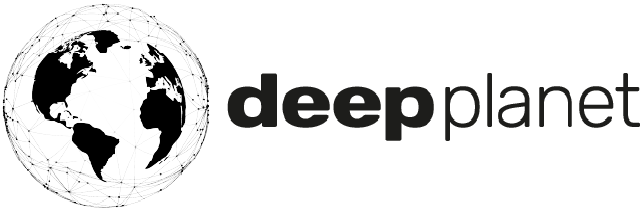Improving Rangeland Productivity and Sustainability with Satellite Imagery & AI Technology
Satellite imagery can be used to detect overgrazing and biomass of rangeland forage. Earth Observation data combined with Deep Planet’s AI platform provides highly accurate predictions, more frequently and at much greater scale than traditional manual monitoring is capable of, helping to inform better management decisions at a fraction of the time and cost.
Rangelands:
Grasslands are the most widespread vegetation type on the planet, accounting for 37% of the land surface - some 3.5 billion hectares. Rangeland ecosystems are an important habitat for a wealth of species and act as important water and carbon stores within the landscape. However, increasing human encroachment and climate change impact is damaging these landscapes. In Sub-Saharan Africa, it is estimated that 48% of rangeland area used by livestock is degraded, reducing potential productivity and making the region increasingly vulnerable to soil erosion and drought.
Current practice:
Rethinking the manner in which we sustainably use rangelands as a resource is essential to maintaining healthy rangeland ecosystem function into the future. Rangeland managers currently rely on conducting manual measurements of forage health across their land to inform grazing decisions. This process presents a variety of challenges for rangeland managers:
Time and labour-intensity: Manual monitoring is cost and labour intensive, requiring trained individuals to carry out localised manual assessments over large areas. Satellite imagery can provide detailed analysis over large areas on a weekly basis.
Grazing strategies: Basing grazing decisions on limited manual samples across large areas is prone to inaccuracies. Deep Planet’s wholistic data insights take the guesswork out of decision making, helping to implement effective regenerative grazing strategies to improve rangeland productivity and sustainability.
Scalability: Time associated with manual surveys of forage health presents a barrier to expanding good management practice across large areas. Satellite imagery can facilitate scaling good management across entire rangelands.
Our Technology:
In conjunction with the European Space Agency and a Masai Mara Conservancy, Deep Planet has developed an online platform, leveraging Satellite Imagery and Machine Learning to provide weekly monitoring insights for a range of parameters across the entire conservancy, saving time and labour costs:
Overgrazing: Identifying overgrazed areas of forage at scale is vital for informing grazing strategies, identifying degraded areas early and monitoring whole ecosystems. Deep Planet’s platform provides weekly insights with 92% accuracy at a 10m2 resolution.This can inform moving grazing animals or mobile bomas in areas where drastic management is required.
Biomass: Deep Planet can provide weekly biomass estimations with a 10m2 resolution across your entire region at 97% accuracy.
Plant Maturity, Density, Height & Leaf Area: Deep Planet’s platform provides insights on a range of parameters useful in identifying areas of overgrazed, growing and overrested forage to further optimise grazing strategy.
NDVI & NDWI: NDVI and NDWI predictions can be used to provide additional indication of forage health and water stress across rangelands.
Work Order Management: Deep Planet’s platform allows users to make records of, and track progress of actions
Overgrazed Area and Grassland Biomass for a Masai Mara Conservancy on the Deep Planet Platform
The Future:
Our work with rangelands in the Masai Mara region has shown that remote monitoring of large regions can not only help to increase productivity but can also help scaling effective regenerative grazing practices.
Biological carbon sequestration from better rangeland management will have a profound impact on how we continue to combat climate change globally. We are now deploying our solution over large rangelands in Masai Mara and developing carbon storage monitoring capabilities to further aid in understanding the environmental value of your land and its role in protecting the future of our planet.
We would love to hear from you:
Want to learn more about how satellite imagery and AI can assist your rangeland monitoring programme? Register for a demo by using the link below.


